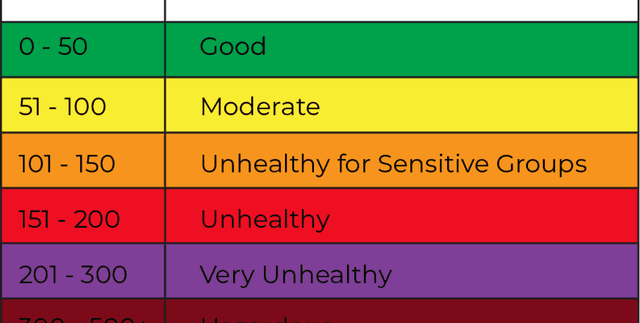Daily AQI Readings for Major US Cities 2023
Data Science and Analytics
Tags and Keywords
Trusted By




"No reviews yet"
Free
About
Air quality data for various Core-Based Statistical Areas (CBSAs) across the United States for the year 2023 is presented. This information was gathered from the EPA's Air Quality Index Daily Values Report. It serves as a valuable resource for analysing air quality trends, as the complete 2023 dataset was not fully available from the EPA as of April 2024. The data covers daily measurements, including the overall Air Quality Index (AQI) value, the primary pollutant, and the specific location of the measurement.
Columns
- Date: The date the measurement was recorded.
- Overall AQI value: The calculated Air Quality Index value for that day.
- Main Pollutant: The pollutant most responsible for the AQI value (e.g., Ozone, PM2.5).
- Name of site where the AQI value was measured: The common name of the monitoring station.
- ID of site where the AQI value was measured: The unique identifier for the monitoring station.
- Source of overall AQI value: The system from which the data was sourced (e.g., AQS, AirNow).
- Ozone level: The measured level of Ozone.
- 8 PM25 level: The measured level of fine particulate matter (PM2.5).
- CO level: The measured level of Carbon Monoxide.
- PM10 level: The measured level of particulate matter (PM10).
- NO2 level: The measured level of Nitrogen Dioxide.
- AQI category: The qualitative category of the AQI value (e.g., good, moderate).
- City name: The name of the city associated with the measurement.
- State name: The name of the state where the measurement was taken.
Distribution
The dataset is provided as a single CSV file (
aqidataset.csv) with a size of 1.01 MB. It contains 10,900 rows and 15 columns. There are no missing values in the primary identifying columns like Date, AQI value, city, and state. However, specific pollutant level columns such as CO, PM10, and NO2 have missing data.Usage
This dataset is suitable for a range of applications including:
- Environmental Research: Analysing the impact of various factors on urban air quality.
- Public Health Studies: Investigating the correlation between air pollution levels and health outcomes in different metropolitan areas.
- Business Analytics: Informing decisions related to real estate, logistics, and tourism based on environmental factors.
- Urban Planning: Aiding city planners in developing strategies to mitigate air pollution.
Coverage
- Geographic Coverage: The data includes measurements from 30 major US metropolitan areas, including New York, Los Angeles, Chicago, Houston, and Washington, DC. The data points represent the most populated cities within the CBSAs and may include metrics for nearby areas.
- Temporal Coverage: The dataset covers the full calendar year of 2023, from 1 January 2023 to 31 December 2023.
License
CC0: Public Domain
Who Can Use It
- Data Scientists and Analysts: For predictive modelling of air quality and trend analysis.
- Environmental Scientists: To study pollution patterns and sources in urban environments.
- Public Health Researchers: To explore links between air quality and community health statistics.
- Journalists and Policy Makers: For data-driven reporting and informed environmental policy-making.
Dataset Name Suggestions
- 2023 US Metro Air Quality Index Data
- United States Urban Air Quality (2023)
- Daily AQI Readings for Major US Cities 2023
- EPA Air Quality Index for US CBSAs (2023)
Attributes
Original Data Source: Daily AQI Readings for Major US Cities 2023
Loading...
